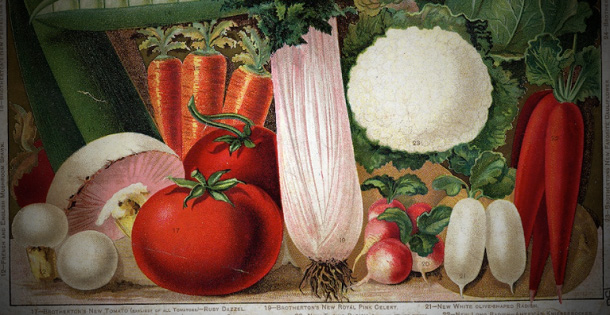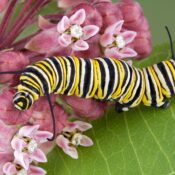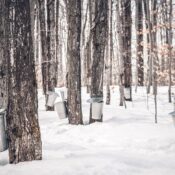Thomas Jefferson said, “The greatest service which can be rendered any country is to add a useful plant to its culture.” Jefferson was a steward of many heirloom crops — like lettuces, peas, and beans — on his farm at Monticello. Heirlooms differ from many industrial crops in that they are open-pollinated and produce seeds that can be planted the next season. Heirloom seeds have been passed down in family gardens for generations, sometimes for centuries.
“They’re germplasm, but they’re also part of our identity,” says Lee Buttala, Executive Director of Seed Savers Exchange. The Iowa non-profit, started in 1975, tasks itself with keeping these useful plants in our culture by saving and distributing heirlooms to growers around the world. “The work that we do goes across political spectrums,” Buttala says. Besides being crucial for biodiversity in agriculture, he believes these seeds and the stories behind them make up a fascinating part of our collective mythology surrounding our food.
Sometimes, heirloom varieties are lost for good, due to a bad growing season or some other mishap. Recently, Buttala visited the Svalbard Global Seed Vault, a seed bank on an arctic island of Norway, to deposit some seeds alongside a host of international visitors. One variety Buttala took along was the Norwegian pencil bean, a crop the organization recently obtained after several generations of a family had grown them in Washington state via Minnesota. While he deposited them for safe-keeping, a Norwegian ambassador recognized the variety from his childhood. Buttala gave him a handful of Norwegian pencil beans to grow, since the ambassador had had some years ago that wouldn’t germinate. “As far as he knew, it had stopped existing in the world,” Buttala said.
It’s easy to participate in conserving these varieties: you just grow them. Often, the flavor and color of heirloom fruits and vegetables is striking compared to those you can buy at the store. And when you garden with them, you’re involved in conserving heritage as well. In our country’s long history of immigration and transfers, heirloom varieties have made their way into the land and through generations by carefully conducted traditions. Each seed comes with a story that may or may not be an exaggerated tale, but — myth or not — these varieties could one day save the planet.
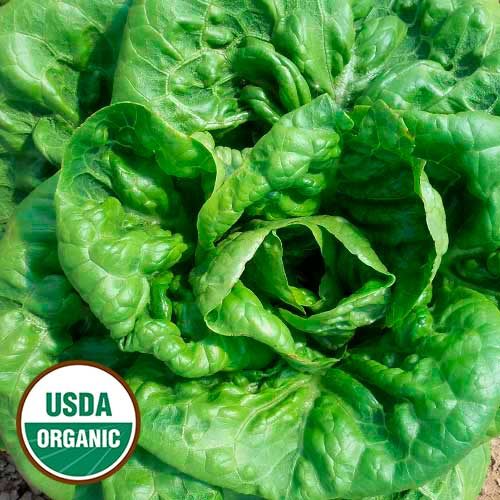
Aunt Mae’s Bibb Lettuce
You might have received these lettuce seeds if you visited the right barber shop in Boalsburg, Pennsylvania in the early ’50s. Nestor Keene handed out packets of his aunt’s lettuce seeds at Keene’s Barber Shop for years. He had grown it since 1937. Aunt Mae Smith is said to have acquired the butterhead variety from a family named Zimmerman in Brush Valley, Pennsylvania. Keene’s closed in 2016, but Aunt Mae’s bibb lettuce lives on. Buy seeds on Seedsavers.org
Chelsea Watermelon
Chelsea, Iowa’s population of 261 people is half of what it was 100 years ago. In those days, farmers took advantage of Chelsea’s sandy hills by covering the land with watermelon patches. They filled their triple box wagons with Chelsea watermelons and sold them in town. The delicate melons weren’t suitable for shipping, but that didn’t stop growers like George “Water Melon” Smith and others from carting their harvest to nearby towns. Melon-growing has declined in Chelsea, but there are still remnants of the roadside “melon shanties” that sold this sweet heirloom. Buy seeds on Seedsavers.org
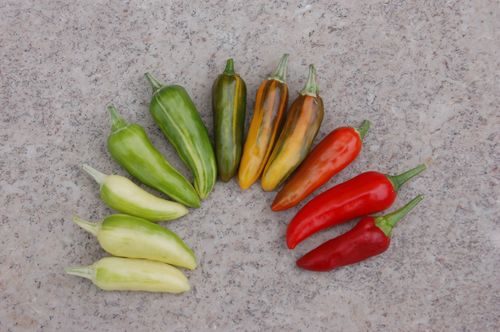
Fish Pepper
From the gardens of slaves in 19th-century Chesapeake Bay came the Fish pepper, a light-green (or bright red) hot pepper used in fish and shellfish dishes. The heirloom is thought to have originated from the Caribbean. The Fish pepper disappeared from Maryland kitchens in the 20th century, but in 1995 food historian William Woys Weaver offered seeds he received from his grandfather in the Seed Savers Exchange Yearbook. Buy seeds on Rareseeds.com
Collier Cucumber
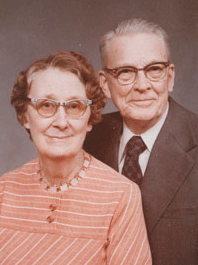
In Nashville, in the 1950s, Graham and Margaret Collier used all of their family’s heirloom cucumber seeds for their summer garden. Margaret’s parents had obtained this special variety from a migrant community in Southern Indiana in 1910, and she continued growing the cucumbers into adulthood. The only problem was that none of the plants came up that summer. The Collier’s worried the heirloom was lost forever. “However,” wrote their daughter, May, “miracle of miracles, next year a volunteer plant came up!” Graham tended carefully to the lone survivor, and the Collier cucumber line was saved. Buy seeds on Seedsavers.org
Nebraska Wedding Tomato
Betty Englert of Sandpoint, Idaho claimed her pioneer ancestors brought this orange tomato to western Nebraska in covered wagons in the 1800s. She grew the variety from 1934 until the 1980s. It is thought that the tradition of giving seeds as wedding gifts derived from this heirloom. Buy seeds on Superseeds.com
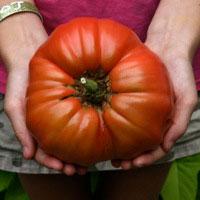
Radiator Charlie’s Mortgage Lifter Tomato
After beginning work in the cotton fields of North Carolina at age 4, Marshall Cletus “Radiator Charlie” Byles owned an auto repair shop at the bottom of a mountain. During the Great Depression, Charlie was in need of another source of income. He hatched a plan to cross-pollinate tomatoes to create one super plant, and he spent six years doing just that. He sold the tomato plants for one dollar each, and paid off his mortgage with the profits of his popular seedlings. The Mortgage Lifter tomato is no lemon, either. The fruits range from one to two pounds, have few seeds, and are disease-resistant. Buy seeds on Sowtrueseed.com
Swenson Swedish Pea
The Swenson pea came to Minnesota all the way from Småland in southern Sweden in 1876. Charles Swenson offered the cultivar, saying his grandfather, Carl Johan Swenson, brought the peas when he emigrated to Clinton, Minnesota. Charles remembered his aunts and uncles growing the peas in long rows on fences in their gardens, and the early harvest was creamed into a traditional Scandinavian dish. Buy seeds on Seedsavers.org
Become a Saturday Evening Post member and enjoy unlimited access. Subscribe now
